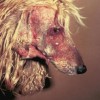 Mange is a persistent skin condition of mammals caused by infestation with parasitic mites. Mites are tiny arthropods, usually less than 1 mm in length and difficult to see with the naked eye. Adult mites have eight legs, and larvae have six. The effect of the mites on the animal’s skin, called “mange,” is the most visible sign of an infestation. This 6-page fact sheet describes several skin conditions commonly caused by parasitic mites in domestic animals. Written by E. N. I. Weeks and P. E. Kaufman, and published by the UF Department of Entomology and Nematology, September 2012.
Mange is a persistent skin condition of mammals caused by infestation with parasitic mites. Mites are tiny arthropods, usually less than 1 mm in length and difficult to see with the naked eye. Adult mites have eight legs, and larvae have six. The effect of the mites on the animal’s skin, called “mange,” is the most visible sign of an infestation. This 6-page fact sheet describes several skin conditions commonly caused by parasitic mites in domestic animals. Written by E. N. I. Weeks and P. E. Kaufman, and published by the UF Department of Entomology and Nematology, September 2012.
http://edis.ifas.ufl.edu/in953
Category: Livestock
Comparing the Urine Ketone Strip Test and Handheld Ketone Meter to Diagnose Ketosis in Early Lactation Dairy Cows (VM186)
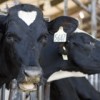 Ketosis is a common metabolic disease in fresh dairy cows. Clinical and subclinical ketosis (SCK) can cause reduced milk yield, decreased milk protein, reduced reproductive capacity, and increased risk of displaced abomasum. Usually, diagnosing ketosis is performed by measuring acetoacetate or BHBA levels in the blood, urine, or milk samples. Measuring BHBA in serum or plasma is considered the gold standard diagnostic test for subclinical ketosis, because this method has stability, but the price for ketone strips is approximately $0.08/strip while the price for the the electronic BHBA measuring system is approximately $1.00. UF/IFAS researchers conducted a study to compare the two, using 72 Holstein cows between 14–40 days in milk from three dairy farms in north-central Florida with 450–800 lactating dairy cows. The key finding for this experiment is that no difference exists in BHBA concentration between cows that had a trace or small in the ketone strip reading. This 3-page fact sheet was written by Klibs N. Galvão, Achilles Vieira Neto, Gustavo Peña, Joao Bittar, and Lucas Ibarbia, and published by the UF Department of Veterinary Medicine-Large Animal Clinical Sciences, October 2012.
Ketosis is a common metabolic disease in fresh dairy cows. Clinical and subclinical ketosis (SCK) can cause reduced milk yield, decreased milk protein, reduced reproductive capacity, and increased risk of displaced abomasum. Usually, diagnosing ketosis is performed by measuring acetoacetate or BHBA levels in the blood, urine, or milk samples. Measuring BHBA in serum or plasma is considered the gold standard diagnostic test for subclinical ketosis, because this method has stability, but the price for ketone strips is approximately $0.08/strip while the price for the the electronic BHBA measuring system is approximately $1.00. UF/IFAS researchers conducted a study to compare the two, using 72 Holstein cows between 14–40 days in milk from three dairy farms in north-central Florida with 450–800 lactating dairy cows. The key finding for this experiment is that no difference exists in BHBA concentration between cows that had a trace or small in the ketone strip reading. This 3-page fact sheet was written by Klibs N. Galvão, Achilles Vieira Neto, Gustavo Peña, Joao Bittar, and Lucas Ibarbia, and published by the UF Department of Veterinary Medicine-Large Animal Clinical Sciences, October 2012.
http://edis.ifas.ufl.edu/vm186
Horn Fly Management (ENY288/IN952)
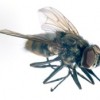 Horn flies are one of the livestock pests with the greatest impact on the health and productivity of cattle. Economic losses due to horn fly damage are estimated at $36 million annually in Florida alone. In the U.S.A. annual losses total between $700 million and $1 billion, with up to $60 million spent on insecticidal control. Horn fly damage is caused by blood feeding. The flies feed frequently and exclusively on blood, piercing the skin of cattle with their proboscis and taking around 20 small blood meals each day. Pain and irritation due to the constant presence of the flies and their bites causes defensive behavior in the cattle that prevents adequate food consumption and rest. This 4-page fact sheet was written by P. E. Kaufman and E. N. I. Weeks, and published by the UF Department of Entomology and Nematology, September 2012.
Horn flies are one of the livestock pests with the greatest impact on the health and productivity of cattle. Economic losses due to horn fly damage are estimated at $36 million annually in Florida alone. In the U.S.A. annual losses total between $700 million and $1 billion, with up to $60 million spent on insecticidal control. Horn fly damage is caused by blood feeding. The flies feed frequently and exclusively on blood, piercing the skin of cattle with their proboscis and taking around 20 small blood meals each day. Pain and irritation due to the constant presence of the flies and their bites causes defensive behavior in the cattle that prevents adequate food consumption and rest. This 4-page fact sheet was written by P. E. Kaufman and E. N. I. Weeks, and published by the UF Department of Entomology and Nematology, September 2012.
http://edis.ifas.ufl.edu/in952
Carbon Sequestration in Grazing Land Ecosystems (SL373/SS574)
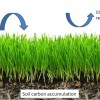 Native and improved pastures play an important role in sequestering carbon from the atmosphere. Because of the relatively high sequestration rates and extensive area, grazing land represents an important component of terrestrial carbon dioxide (CO2) offset and is a significant sink for long-term carbon sequestration and greenhouse gas mitigation. This 4-page fact sheet contains information for stakeholders, students, scientists, and environmental agencies interested in enhancing ecosystems services provided by grazing lands. Written by Maria Silveira, Ed Hanlon, Mariana Azenha, and Hiran M. da Silva, and published by the UF Department of Soil and Water Science, September 2012.
Native and improved pastures play an important role in sequestering carbon from the atmosphere. Because of the relatively high sequestration rates and extensive area, grazing land represents an important component of terrestrial carbon dioxide (CO2) offset and is a significant sink for long-term carbon sequestration and greenhouse gas mitigation. This 4-page fact sheet contains information for stakeholders, students, scientists, and environmental agencies interested in enhancing ecosystems services provided by grazing lands. Written by Maria Silveira, Ed Hanlon, Mariana Azenha, and Hiran M. da Silva, and published by the UF Department of Soil and Water Science, September 2012.
http://edis.ifas.ufl.edu/ss574
Self-Treatment Methods for Livestock–Backrubbers (ENY279/IG134)
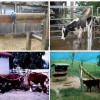 Back rubbers are a method of pesticide self-treatment for cattle. When bothered by insects or other pests, cattle tend to rub against objects. Backrubbers provide a rubbing surface that is treated with a pesticide. Cattle self-treat during rubbing, which reduces the number of flies, particularly horn flies, and parasites such as lice, on the animal. Backrubbers may be purchased commercially or constructed from easily available materials. A properly designed backrubber that supplies pesticide reliably to the animal can be a valuable addition to an integrated pest management program. This 4-page fact sheet was written by E. N. I. Weeks and P. E. Kaufman, and published by the UF Department of Entomology and Nematology, September 2012.
Back rubbers are a method of pesticide self-treatment for cattle. When bothered by insects or other pests, cattle tend to rub against objects. Backrubbers provide a rubbing surface that is treated with a pesticide. Cattle self-treat during rubbing, which reduces the number of flies, particularly horn flies, and parasites such as lice, on the animal. Backrubbers may be purchased commercially or constructed from easily available materials. A properly designed backrubber that supplies pesticide reliably to the animal can be a valuable addition to an integrated pest management program. This 4-page fact sheet was written by E. N. I. Weeks and P. E. Kaufman, and published by the UF Department of Entomology and Nematology, September 2012.
http://edis.ifas.ufl.edu/ig134
Stable Fly (Dog Fly) Control (ENY267/IG133)
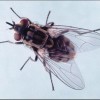 The stable fly is a blood-sucking filth fly of considerable importance to people, pets, livestock, and the tourist industry in Florida. Filth flies, including stable flies, exploit habitats and food sources created by human activities, such as farming. Stable flies primarily attack animals for a blood meal, but in the absence of an animal host, they will bite people. This 4-page fact sheet was written by P. E. Kaufman and E. N. I. Weeks, and published by the UF Department of Entomology and Nematology, August 2012.
The stable fly is a blood-sucking filth fly of considerable importance to people, pets, livestock, and the tourist industry in Florida. Filth flies, including stable flies, exploit habitats and food sources created by human activities, such as farming. Stable flies primarily attack animals for a blood meal, but in the absence of an animal host, they will bite people. This 4-page fact sheet was written by P. E. Kaufman and E. N. I. Weeks, and published by the UF Department of Entomology and Nematology, August 2012.
http://edis.ifas.ufl.edu/ig133
Pigeon Fever in Florida's Horses (VM185)
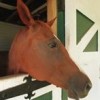 For the first time in recent history, Florida is seeing a large number of cases of pigeon fever in horses. As of June 2012, the state is reporting over 60 suspected equine cases in Okaloosa, Walton, and Marion counties. The majority of cases have been confined to the Panhandle. Pigeon fever is caused by Corynebacterium pseudotuberculosis, which is a gram-positive, rod-shaped bacteria. Horses with the most common form of pigeon fever will develop external abscesses. This 2-page fact sheet was written by Amanda M. House, and published by the UF Department of Veterinary Medicine-Large Animal Clinical Sciences, August 2012.
For the first time in recent history, Florida is seeing a large number of cases of pigeon fever in horses. As of June 2012, the state is reporting over 60 suspected equine cases in Okaloosa, Walton, and Marion counties. The majority of cases have been confined to the Panhandle. Pigeon fever is caused by Corynebacterium pseudotuberculosis, which is a gram-positive, rod-shaped bacteria. Horses with the most common form of pigeon fever will develop external abscesses. This 2-page fact sheet was written by Amanda M. House, and published by the UF Department of Veterinary Medicine-Large Animal Clinical Sciences, August 2012.
http://edis.ifas.ufl.edu/vm185
Cogongrass (Imperata cylindrica) Biology, Ecology, and Management in Florida Grazing Lands (SSAGR52/WG202)
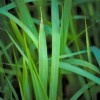 Cogongrass is found on every continent and is considered a weedy pest in 73 countries. In the U.S., cogongrass is found primarily in the Southeast. It was accidentally introduced into Alabama in the early 1900s, and purposely introduced as a potential forage and soil stabilizer in Florida (and other states) in the 1930s and early 1940s. However, soon after investigations began it was realized that cogongrass could be a weedy pest. Since its introduction, cogongrass has spread to nearly every county in Florida. In some cases, it has completely taken over pastures so that it is the only species present. This is a common thread where cogongrass invades; it quickly displaces desirable species and requires intensive management. This 5-page fact sheet was written by B. A. Sellers, J. A. Ferrell, G. E. MacDonald, K. A. Langeland, and S. L. Flory, and published by the UF Department of Agronomy, August 2012.
Cogongrass is found on every continent and is considered a weedy pest in 73 countries. In the U.S., cogongrass is found primarily in the Southeast. It was accidentally introduced into Alabama in the early 1900s, and purposely introduced as a potential forage and soil stabilizer in Florida (and other states) in the 1930s and early 1940s. However, soon after investigations began it was realized that cogongrass could be a weedy pest. Since its introduction, cogongrass has spread to nearly every county in Florida. In some cases, it has completely taken over pastures so that it is the only species present. This is a common thread where cogongrass invades; it quickly displaces desirable species and requires intensive management. This 5-page fact sheet was written by B. A. Sellers, J. A. Ferrell, G. E. MacDonald, K. A. Langeland, and S. L. Flory, and published by the UF Department of Agronomy, August 2012.
http://edis.ifas.ufl.edu/wg202
Feeding Ensiled Citrus Pulp to Finishing Pigs (AN282)
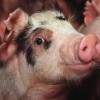 For the past six years, feed costs have continually increased and Florida has greater feed costs than the rest of the country because grain must be shipped here from where it was produced. But the Florida pork producers generally get prices above market value for their pigs because of strong demand for locally-raised foods. These Florida pork producers could become more profitable if they could significantly decrease their production costs. In Florida, pork producers have an opportunity to use citrus byproducts as a feedstuff to substantially and sustainably decrease their feed costs. This 4-page fact sheet was written by J. D. Crosswhite, N. B. Myers, A. T. Adesogan, J. H. Brendemuhl, D. D. Johnson, and C. C. Carr, and published by the UF Department of Animal Sciences, August 2012.
For the past six years, feed costs have continually increased and Florida has greater feed costs than the rest of the country because grain must be shipped here from where it was produced. But the Florida pork producers generally get prices above market value for their pigs because of strong demand for locally-raised foods. These Florida pork producers could become more profitable if they could significantly decrease their production costs. In Florida, pork producers have an opportunity to use citrus byproducts as a feedstuff to substantially and sustainably decrease their feed costs. This 4-page fact sheet was written by J. D. Crosswhite, N. B. Myers, A. T. Adesogan, J. H. Brendemuhl, D. D. Johnson, and C. C. Carr, and published by the UF Department of Animal Sciences, August 2012.
http://edis.ifas.ufl.edu/an282
Utilization of Cull Vegetables as Feedstuffs for Cattle (AN280)
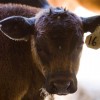 Cull vegetables can be an economical source of nutrients in beef cattle diets. They may be offered to beef cattle producers at a decreased cost or no cost. This 3-page fact sheet discusses the nutrient content and characteristics that need to be understood when utilizing cull vegetables. Written by Courtney Davis, Lindsey Wiggins, and Matt Hersom, and published by the UF Department of Animal Sciences, August 2012.
Cull vegetables can be an economical source of nutrients in beef cattle diets. They may be offered to beef cattle producers at a decreased cost or no cost. This 3-page fact sheet discusses the nutrient content and characteristics that need to be understood when utilizing cull vegetables. Written by Courtney Davis, Lindsey Wiggins, and Matt Hersom, and published by the UF Department of Animal Sciences, August 2012.
http://edis.ifas.ufl.edu/an280
Tropical Bont Tick Amblyomma variegatum Fabricius (Arachnida: Acari: Ixodidae) (EENY518/IN934)
 The tropical bont tick is considered one of the most detrimental of the tick species present in Africa and now the Caribbean. It can result in severe economic losses due to hide damage, milk production reduction, and death of livestock. This 7-page fact sheet was written by Karen C. Prine and Amanda C. Hodges, and published by the UF Department of Entomology and Nematology, June 2012.
The tropical bont tick is considered one of the most detrimental of the tick species present in Africa and now the Caribbean. It can result in severe economic losses due to hide damage, milk production reduction, and death of livestock. This 7-page fact sheet was written by Karen C. Prine and Amanda C. Hodges, and published by the UF Department of Entomology and Nematology, June 2012.
http://edis.ifas.ufl.edu/in934
Ultrasound and Carcass Merit of Youth Market Cattle (AN279)
 Market cattle shown at county and state fairs and other youth shows across the United States are food animals. The endpoint value of food animals is primarily based on their carcass merit. Ideally, carcass merit should be assessed from actual carcasses. However, when carcass data cannot be collected, ultrasound evaluation of market cattle is an excellent method to accurately assess differences in fat thickness, ribeye area, and percentage of intramuscular fat within the ribeye. This 7-page fact sheet was written by Chad Carr, Dwain Johnson, and Mark Shuffitt, and published by the UF Department of Animal Science, June 2012.
Market cattle shown at county and state fairs and other youth shows across the United States are food animals. The endpoint value of food animals is primarily based on their carcass merit. Ideally, carcass merit should be assessed from actual carcasses. However, when carcass data cannot be collected, ultrasound evaluation of market cattle is an excellent method to accurately assess differences in fat thickness, ribeye area, and percentage of intramuscular fat within the ribeye. This 7-page fact sheet was written by Chad Carr, Dwain Johnson, and Mark Shuffitt, and published by the UF Department of Animal Science, June 2012.
http://edis.ifas.ufl.edu/an279
Use of Ultrasonography to Age Pregnancy in Early Gestation in Dairy Cows (VM184)
 Using ultrasonography for diagnosis and aging of pregnancy is becoming more widespread among bovine practitioners because it can be done earlier than by traditional methods, and because it can be used to monitor fetal development and determine fetal age and sex. This 3-page fact sheet presents a detailed measurement of the amniotic vesicle from 27 to 34 days after breeding so a more precise aging of early pregnancies can be performed. Written by Klibs N.A. Galvão, and published by the UF Department of Veterinary Medicine-Large Animal Clinical Sciences, May 2012.
Using ultrasonography for diagnosis and aging of pregnancy is becoming more widespread among bovine practitioners because it can be done earlier than by traditional methods, and because it can be used to monitor fetal development and determine fetal age and sex. This 3-page fact sheet presents a detailed measurement of the amniotic vesicle from 27 to 34 days after breeding so a more precise aging of early pregnancies can be performed. Written by Klibs N.A. Galvão, and published by the UF Department of Veterinary Medicine-Large Animal Clinical Sciences, May 2012.
http://edis.ifas.ufl.edu/vm184
Factors that Affect Calf Selling Price at Marketing (AN278)
 There are differences between the real and perceived reasons that cattle buyers discount calves; cattle producers can control some reasons for price differentials, but they cannot control all of them. This 4-page fact sheet will review some of the attributes that affect market calf price and overall value. Written by Matt Hersom and Todd Thrift, and published by the UF Department of Animal Science, May 2012.
There are differences between the real and perceived reasons that cattle buyers discount calves; cattle producers can control some reasons for price differentials, but they cannot control all of them. This 4-page fact sheet will review some of the attributes that affect market calf price and overall value. Written by Matt Hersom and Todd Thrift, and published by the UF Department of Animal Science, May 2012.
http://edis.ifas.ufl.edu/an278
Risk Factors for Uterine Disease in Dairy Cows (VM183)
 Uterine diseases are highly prevalent in high-producing dairy cows. Predictors of uterine disease include traditional risk factors, BHBA blood concentration, NEFA blood concentration, neutrophil glycogen stores and calcium. This 4-page fact sheet was written by Klibs N.A. Galvão, and published by the UF Department of Veterinary Medicine-Large Animal Clinical Sciences, May 2012.
Uterine diseases are highly prevalent in high-producing dairy cows. Predictors of uterine disease include traditional risk factors, BHBA blood concentration, NEFA blood concentration, neutrophil glycogen stores and calcium. This 4-page fact sheet was written by Klibs N.A. Galvão, and published by the UF Department of Veterinary Medicine-Large Animal Clinical Sciences, May 2012.
http://edis.ifas.ufl.edu/vm183
Selecting Pigs for Youth Swine Shows (4HSWG04/4H210)
 Are you interested in participating in a swine show? This 8-page fact sheet will help youth exhibitors determine how and where to purchase a project pig and provide information on what the student should look for when purchasing the pig in order to do well. Published by the UF Department of 4-H Youth Development, April 2012.
Are you interested in participating in a swine show? This 8-page fact sheet will help youth exhibitors determine how and where to purchase a project pig and provide information on what the student should look for when purchasing the pig in order to do well. Published by the UF Department of 4-H Youth Development, April 2012.
http://edis.ifas.ufl.edu/4h210
Management of Postpartum Anestrus in Beef Cows (AN277)
 It is estimated that in Florida alone the cost of infertility of beef cows exceeds $86 million annually. Infertility occurs when cows become pregnant but fail to calve, become pregnant late in the breeding season and fall out of the annual production cycle or fail to become pregnant during the breeding season. The latter two causes of infertility are a direct result of the length of the post-partum interval. This 4-page fact sheet was written by Kalyn Bischoff, Vitor Mercadante, and G. Cliff Lamb, and published by the UF Department of Animal Science, March 2012.
It is estimated that in Florida alone the cost of infertility of beef cows exceeds $86 million annually. Infertility occurs when cows become pregnant but fail to calve, become pregnant late in the breeding season and fall out of the annual production cycle or fail to become pregnant during the breeding season. The latter two causes of infertility are a direct result of the length of the post-partum interval. This 4-page fact sheet was written by Kalyn Bischoff, Vitor Mercadante, and G. Cliff Lamb, and published by the UF Department of Animal Science, March 2012.
http://edis.ifas.ufl.edu/an277
Secuestro y Distribución de Carbono Orgánico del Suelo Bajo Diferentes Sistemas de Manejo de Pasturas (SL363/SS564)
 El secuestro de carbono en el suelo es el proceso de transformación del carbono del aire al carbono orgánico, almacenado en el suelo. A través del secuestro de carbono, los niveles de CO2 atmosférico pueden reducirse en la medida que los niveles de carbono orgánico del suelo aumentan. This 3-page fact sheet was written by Alejandra María Jimenez Madrid, José Trinidad Reyes Sandoval, and Maria L. Silveira, and published by the UF Department of Soil and Water Science, January 2012.
El secuestro de carbono en el suelo es el proceso de transformación del carbono del aire al carbono orgánico, almacenado en el suelo. A través del secuestro de carbono, los niveles de CO2 atmosférico pueden reducirse en la medida que los niveles de carbono orgánico del suelo aumentan. This 3-page fact sheet was written by Alejandra María Jimenez Madrid, José Trinidad Reyes Sandoval, and Maria L. Silveira, and published by the UF Department of Soil and Water Science, January 2012.
http://edis.ifas.ufl.edu/ss564
Estimating Amount of Forage in Hay Fields and Pastures (SSAGR360/AG369)
 Forage serves as the primary source of nutrients for livestock in Florida, and efficient use of forage is critical to the livelihood of Florida farmers and ranchers. Estimating the amount of forage in a pasture can provide useful information when making management decisions. There must be enough material in the field to justify the cost of using harvesting equipment; otherwise, the area should be grazed. This 2-page fact sheet contains instructions for a simple method to determine the approximate amount of forage in hay fields and pastures. Written by T. Wilson, C. Sanders, J. Breman, and L. Sollenberger, and published by the UF Department of Agronomy, March 2012.
Forage serves as the primary source of nutrients for livestock in Florida, and efficient use of forage is critical to the livelihood of Florida farmers and ranchers. Estimating the amount of forage in a pasture can provide useful information when making management decisions. There must be enough material in the field to justify the cost of using harvesting equipment; otherwise, the area should be grazed. This 2-page fact sheet contains instructions for a simple method to determine the approximate amount of forage in hay fields and pastures. Written by T. Wilson, C. Sanders, J. Breman, and L. Sollenberger, and published by the UF Department of Agronomy, March 2012.
http://edis.ifas.ufl.edu/ag369
Environmental and Economic Benefits of Selecting Beef Cattle for Feed Efficiency (AN276/AN276)
Selecting for feed efficiency based on residual food intake can significantly impact the amount of nutrients consumed and excreted per cow without compromising animal performance. Fresh manure output and excretions of phosphorous and nitrogen could be reduced by 29%, while methane emissions can be reduced by as much as 28% when selecting more feed-efficient animals. This 4-page fact sheet was written by Nicolas DiLorenzo and G. Cliff Lamb, and published by the UF Department of Animal Science, February 2012.
http://edis.ifas.ufl.edu/an276